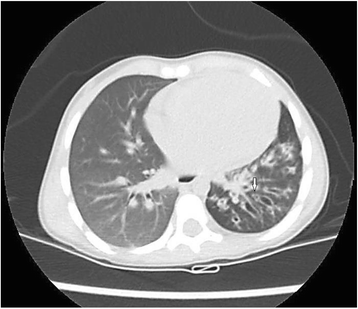A pediatric disease to keep in mind: diagnostic tools and management of bronchiectasis in pediatric age
- PMID: 29284507
- PMCID: PMC5747121
- DOI: 10.1186/s13052-017-0434-0
A pediatric disease to keep in mind: diagnostic tools and management of bronchiectasis in pediatric age
Abstract
Bronchiectasis in pediatric age is a heterogeneous disease associated with significant morbidity.The most common medical conditions leading to bronchial damage are previous pneumonia and recurrent lower airway infections followed by underlying diseases such as immune-deficiencies, congenital airway defects, recurrent aspirations and mucociliary clearance disorders.The most frequent symptom is chronic wet cough. The introduction of high-resolution computed tomography (HRCT) has improved the time of diagnosis allowing earlier treatment.However, the term "bronchiectasis" in pediatric age should be used with caution, since some lesions highlighted with HRCT may improve or regress. The use of chest magnetic resonance imaging (MRI) as a radiation-free technique for the assessment and follow-up of lung abnormalities in non-Cystic Fibrosis chronic lung disease is promising.Non-Cystic Fibrosis Bronchiectasis management needs a multi-disciplinary team. Antibiotics and airway clearance techniques (ACT) represent the pillars of treatment even though guidelines in children are lacking. The Azithromycin thanks to its antinflammatory and direct antimicrobial effect could be a new strategy to prevent exacerbations.
Keywords: Airway clearance techniques; Antibiotics; Azithromycin; Children bronchiectasis; chronic wet cough; HRCT; MRI.
Conflict of interest statement
Ethics approval and consent to participate
Not applicable
Consent for publication
Not applicable
Competing interests
The authors declare that they have no competing interests.
Publisher’s Note
Springer Nature remains neutral with regard to jurisdictional claims in published maps and institutional affiliations.
Figures
References
Publication types
MeSH terms
LinkOut - more resources
Full Text Sources
Other Literature Sources
Medical



